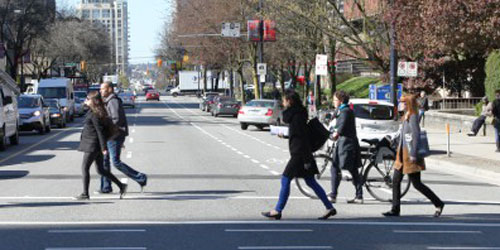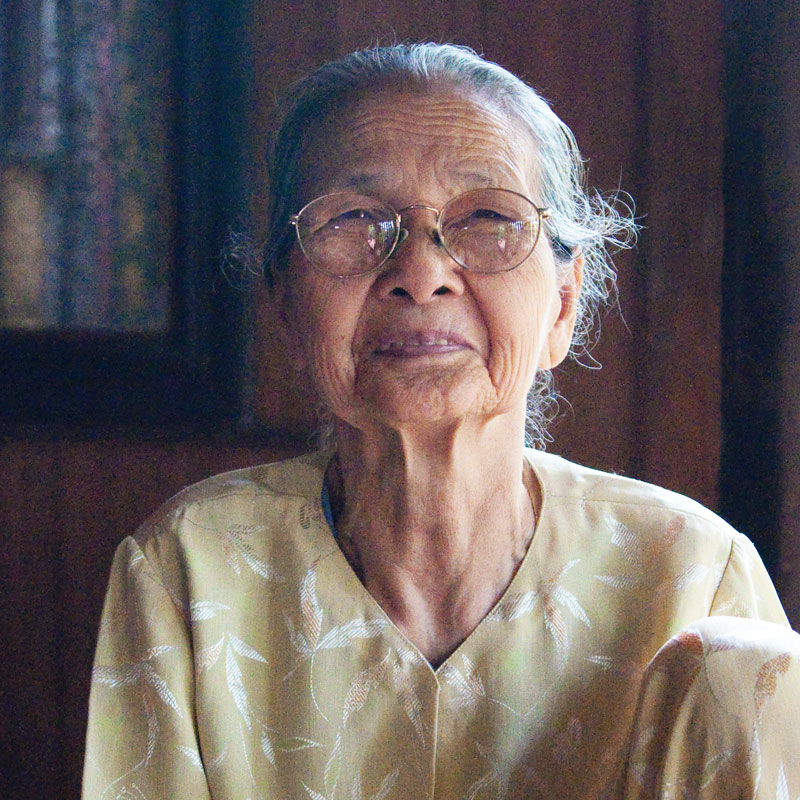ACTIVE STREETS, ACTIVE PEOPLE (ASAP)
Our neighbourhoods can influence behaviours by creating places where it’s easy to walk. This in turn, on a population level, can increase physical activity. For example, if the design of a neighbourhood supports active modes of travel such as walking or bicycling, more people will feel encouraged to be outside and move about their city. These neighbourhood design elements may be in the form of a separated bike path, curb-cuts on sidewalks at intersections, or even a rapid bus line.
We were provided a unique opportunity to capitalize on a “natural experiment” that yielded a better understanding of what constitutes healthy, mobility-focused community design. The City of Vancouver sought to create an urban environment that prioritized the mobility of pedestrians and cyclists (active transportation) and emphasized the role of place-making (social spaces that encourage community participation and interaction). The Active Streets, Active People (ASAP) study was a before and after study evaluating the impact of a greenway development in downtown Vancouver. ASAP had multiple study arms focusing on different population groups: ASAP-Senior (community-dwelling older adults), ASAP-Junior (children and youth), and ASAP-Foreign Born (foreign‐born older adults in South Vancouver, not part of the natural experiment study design).

ASAP-Senior
ASAP-Sr evaluated the impact of a greenway development in downtown Vancouver on community-dwelling older adults’ mobility and social connections. ASAP-Sr used a mixed-method approach to measure changes by collecting both quantitative and qualitative data from participants as well as measuring street-level changes in the physical environment along the Comox-Helmcken greenway development.
This research led to many interesting findings related to the built environment, cycling,1 social environment,2 travel behaviours,3 public transit use4 and health. For example, we found that people get similar physical activity on a bus trip as on a walk trip – walking to and from the bus counts!

References
- Winters M, Sims-Gould J, Franke T, McKay H. “I grew up on a bike”: Cycling and older adults. Journal of Transport & Health. 2015;2:58-67.
- Ottoni CA, Sims-Gould J, Winters M, Heijnen M, McKay HA. “Benches become like porches”: Built and social environment influences on older adults’ experiences of mobility and well-being. Social Science & Medicine. 2016;169:33-41.
- Winters M, Voss C, Ashe MC, Gutteridge K, McKay H, Sims-Gould J. Where do they go and how do they get there? Older adults' travel behaviour in a highly walkable environment. Social Science & Medicine. 2015;133:304-312.
- Voss C, Sims-Gould J, Ashe MC, McKay HA, Pugh C, Winters M. Public transit use and physical activity in community-dwelling older adults: Combining GPS and accelerometry to assess transportation-related physical activity. Journal of Transport & Health. 2016;3:191-199.
ASAP-Foreign-Born (ASAP-FB)
Older Canadians are more ethnically diverse than the general population, and immigrants comprise one third of the elderly population. Research has consistently shown that foreign‐born older adults residing in Canada are confronted with multiple health‐related challenges, including social isolation and limited access to programs and services. Thus, with older adults as key partners, we aimed to understand the salient health and mobility related issues for foreign‐born older adults who are at risk for social isolation.1,2,3
Working with our community research partners, this study aimed to:
- Develop a comprehensive understanding of the health and mobility needs of foreign‐born older adults living in different South Vancouver neighbourhoods (those that promote or inhibit mobility), and to
- Identify barriers and facilitators to mobility for older adults who in different South Vancouver neighbourhoods.
All components of the study were offered in Hindi, Punjabi, Cantonese, Mandarin and English.

References
- Tong CE, Sims-Gould J, McKay HA. Physical Activity Among Foreign-Born Older Adults in Canada: A Mixed-Method Study Conducted in Five Languages. Journal of Aging and Physical Activity. 2018;26:396-406.
- Tong CE, Franke T, Larcombe K, Sims-Gould J. Fostering Inter-Agency Collaboration for the Delivery of Community-Based Services for Older Adults. British Journal of Social Work. 2018;48:390-411.
- Tong CE, Sims-Gould J, McKay HA. InterACTIVE Interpreted Interviews (I3): A multi-lingual, mobile method to examine the neighbourhood environment with older adults. Social Science & Medicine (1982). 2016;168:207-213.
